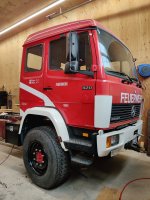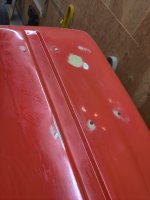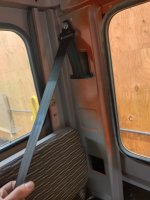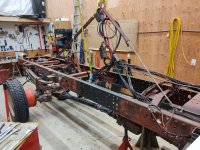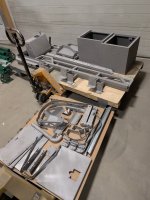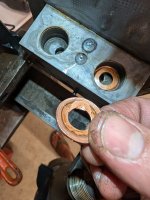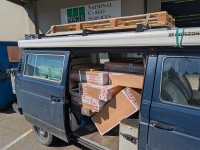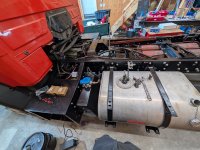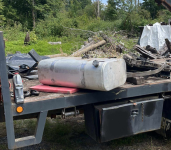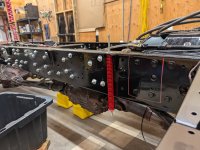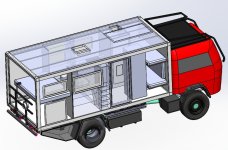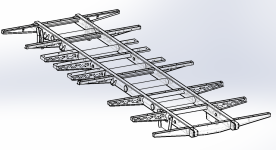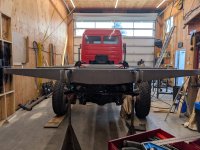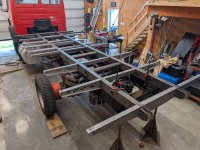Very slow and somewhat unsteady progress is being made. It's reaching a point where it's a little overwhelming, but after a few big decisions get made things will be better again.
My dad had a suggestion for relocating the hydraulic tank so my box could be closer to the cab, It will sit between my battery box and the fuel tanks. I cut the cap off one end and welded it back together, reducing capacity from 60l to 40l, but I won't be running the hydraulics for long so I am not concerned about this. It also now sits just a little below the pump, but it is a short and very large suction line, plus it is within the range allowed by the pump manufacturer.
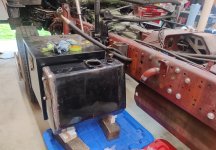

On the other side, I have been populating my secondary chassis box. I picked up an industrial tyre inflation/deflation device with four outlets. I converted it from 120v AC to 24v DC, and it has a big bright screen and nice buttons to set pressures. I am in the process of running hoses to each corner and I found some nice tubes to store them in, more to follow on that. There is also the fuel switchover valves, and the filter.
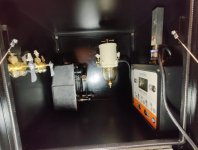
I also picked up an old but unused tyre to test fit on the truck. I might see if I can make it fit my T3....
Because I have the swiss model, the front wheel arch width was 2300mm, but with these tyres and ET110 rims I am 2380mm. I managed to extend the wheel arches by 40mm each side by drilling new holes without it looking ugly. This covers the wheel, only just.
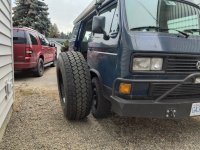
In terms of progress, my main issue is the cost of any locally available composite bodies. I am considering welding either an aluminium or exoskeleton cage, and buying simple panels to glue to the inside myself rather than using fiberglass corners. I may even import the panels from China myself. Does anyone have recommendations of a Chinese GRP/PU/GRP sandwich panel supplier?
Another question, I am worried about an aluminium outer frame for the box as it expands around 6mm more than fiberglass over the 18ft length from -30 to +40c. Weather we have every year. I don't know if the adhesive will like such huge expansion from the aluminium, but perhaps this isn't such a big deal? Has anyone had problems with aluminium and fiberglass bonded to each other? I see it done often enough, so I can't imagine it's an impossible problem to design around.
I'm also considering having a subframe and exoskeleton all in one out of steel, less expansion and easier for me to fabricate myself. Do the usual adhesives stick to a hot dipped galvanised surface? Or am I asking for trouble here...
Steve
Looks so much better with the big tyre!
